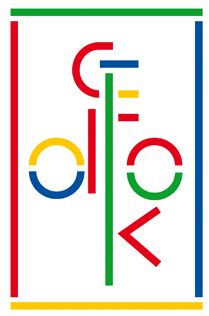User:Eli185/GEDOK

GEDOK, founded in 1926 as the "Gemeinschaft deutscher und oesterreichischer Künstlerinnen und Kunstfreundinnen" “ [1] (Association of German and Austrian Women Artists and Friends of the Arts), is still the oldest and largest network in Europe for women artists of all artistic genres.
Organisation und goal
[edit]Der Bundesverband zählt zur Zeit mehr als 2.750 Mitglieder in 23 Regionalgruppen in Deutschland[2]. Der BundesverbThe national association currently has more than 2,750 members in 23 regional groups in Germany. The national association and the regional groups present female artistic work in the fields of fine arts, applied arts/art design, literature, music and interdisciplinary/performing arts to the public in order to promote female artists and to improve their particular living and working situation. The non-profit association is committed to the gender-appropriate design of all areas of artistic creation as well as to the equal appointment of women to committees and top positions in art and culture. The association is present in public through interdisciplinary art projects, exhibitions, concerts, readings, symposia, publications and catalogs. Through the commitment of its art-promoting members, the association supports its artistically active members ideally and financially.
The association facilitates diverse encounters with art and women artists through exhibition and studio visits, workshop discussions, art and cultural trips. The work of women artists is promoted through the announcement of prizes and awards, awards, scholarships and announcements of competitions by the national association and the regional groups. The following prizes are awarded for outstanding works: Ida Dehmel Art Prize of GEDOK and Gabriele Vossebein for Visual Arts, GEDOK FormART Elke and Klaus Oschmann Prize for Applied Arts, Ida Dehmel Literature Prize and GEDOK Literature Promotion Prize. In the field of music, GEDOK e. V. promotes music through concerts and competitions.
GEDOK e. V. participates in the awarding of the Gabriele Münter Prize for female visual artists and is the publisher of catalogs, documentations, anthologies and editions.[3] The Federal Association is involved in national and international cultural institutions, political bodies and associations and is represented, for example, in the following national and international organizations: International Society of Fine Arts, German Cultural Council, German Arts Council, German Literature Conference, German Music Council, Stiftung Kunstfonds, German Women's Council.
GEDOK e. V. is represented in the Verwertungsgesellschaft Bild-Kunst and in the selection jury Kunst am Bau of the Federal Government. In the above-mentioned bodies, the federal association works on cultural policy in favor of the professional interests of women artists. Internally, GEDOK sees itself as a network and enables its women artists to engage in intensive exchange and collaboration - across disciplinary and regional boundaries.
Origins
[edit]
The association was founded in Hamburg in 1926 by Ida Dehmel (1870-1942) as the "Gemeinschaft deutscher und oesterreichischer Künstlerinnen und Kunstfreundinnen". Ida Dehmel was a member of the Werkbund and on the board of the first Zonta Club. It was not only here that she stood up for women's rights. In particular, she promoted women artists by setting up a network of committed patrons to support them. In 1927, GEDOK NiedersachsenHannover was founded in Hanover; in 1929, the Cologne group was founded under the chairmanship of Alice Neven DuMont, GEDOK Heidelberg under the chairmanship of Stephanie Pellissier, and GEDOK Karlsruhe; in 1930, GEDOK Leipzig was founded by Edith Mendelssohn Bartholdy; and in 1932, GEDOK Berlin.
Shortly after the National Socialist seizure of power, Ida Dehmel was forced to resign from the board in 1933 because of her Jewish origins and was eventually expelled from GEDOK. The persecutions by the National Socialist regime drove her to commit suicide in 1942. Of the 7000 [4] members at the time, 5000 are said to have resigned in solidarity with Ida Dehmel. Elsa Bruckmann (a Nazi party member) was appointed as the new chairwoman, and the women artists' association was renamed "ReichsGEDOK".
Shortly after the Second World War, the first GEDOK groups came together again: in Stuttgart in 1945, in Hanover, Mannheim, Hamburg in 1946, in Cologne in 1947 and in Heidelberg in 1948. In 1948, the federal association GEDOK was newly formed. The constituent first meeting took place in the house of Anna Maria Darboven on the initiative of Marianne Gärtner, the niece of Ida Dehmel, in Hamburg. In 2010, the "Austrian Section" dissolved itself for the time being. In 1990, after reunification, further regional groups were founded in the new German states, including GEDOK Brandenburg, GEDOK Mitteldeutschland in Leipzig and GEDOK Mecklenburg-Vorpommern, so that today the association with its 23 regional groups forms a functioning network.
Board of Directors
[edit]The headquarters of the Federal Association GEDOK e.V. is in Bonn (Haus der Kultur), where its office is also located. Within the board as a whole, the executive committee with representatives of the artists and art patrons consists of the president, the first deputy chairwoman, the second deputy chairwoman, the treasurer and the secretary. Ulrike Rosenbach, among others, served as president of GEDOK from 2012 to 2018. Her successor was Ursula Toyka-Fuong. In October 2022, Béatrice Porthoff was elected to this office.
The association is recognized as a non-profit organization. The members work on a voluntary basis. The association draws its financial resources from contributions and donations as well as project-related grants. A special feature is that not only female artists of all sections, but also art-promoting members are admitted. Admission to the association takes place through the regional groups. For female artists, a university degree is desirable, but qualified self-taught artists can also apply. A jury of experts in the regional groups decides on the admission of female artists.
See also
[edit]Literature
[edit]- Elke Lauterbach-Phillip: Die GEDOK (Gemeinschaft der Künstlerinnen und Kunstförderer e.V.). Ihre Geschichte unter besonderer Berücksichtigung der Bildenden und Angewandten Kunst. Utz, München 2005, ISBN 978-3-8316-0392-3
Weblinks
[edit]References
[edit]- ^ Vossische Zeitung 12.05.1932 Abend-Ausgabe, S. 4.
- ^ "GEDOK". Retrieved 2019-04-01.
- ^ "Vergabe GABRIELE MUENTER PREIS, Dokumentation, Vergabe 1-2-3-4-5-6" (in German). Retrieved 2011.
{{cite web}}: Check date values in:|access-date=(help) - ^ Ruth Schneeberger (2015-11-18). "Frauenkunstverein „Gedok" – Fenster zur Finsternis". sueddeutsche.de. Retrieved 2016-03-01.
[[Category:Abbreviations]] [[Category:1926 establishments]]
